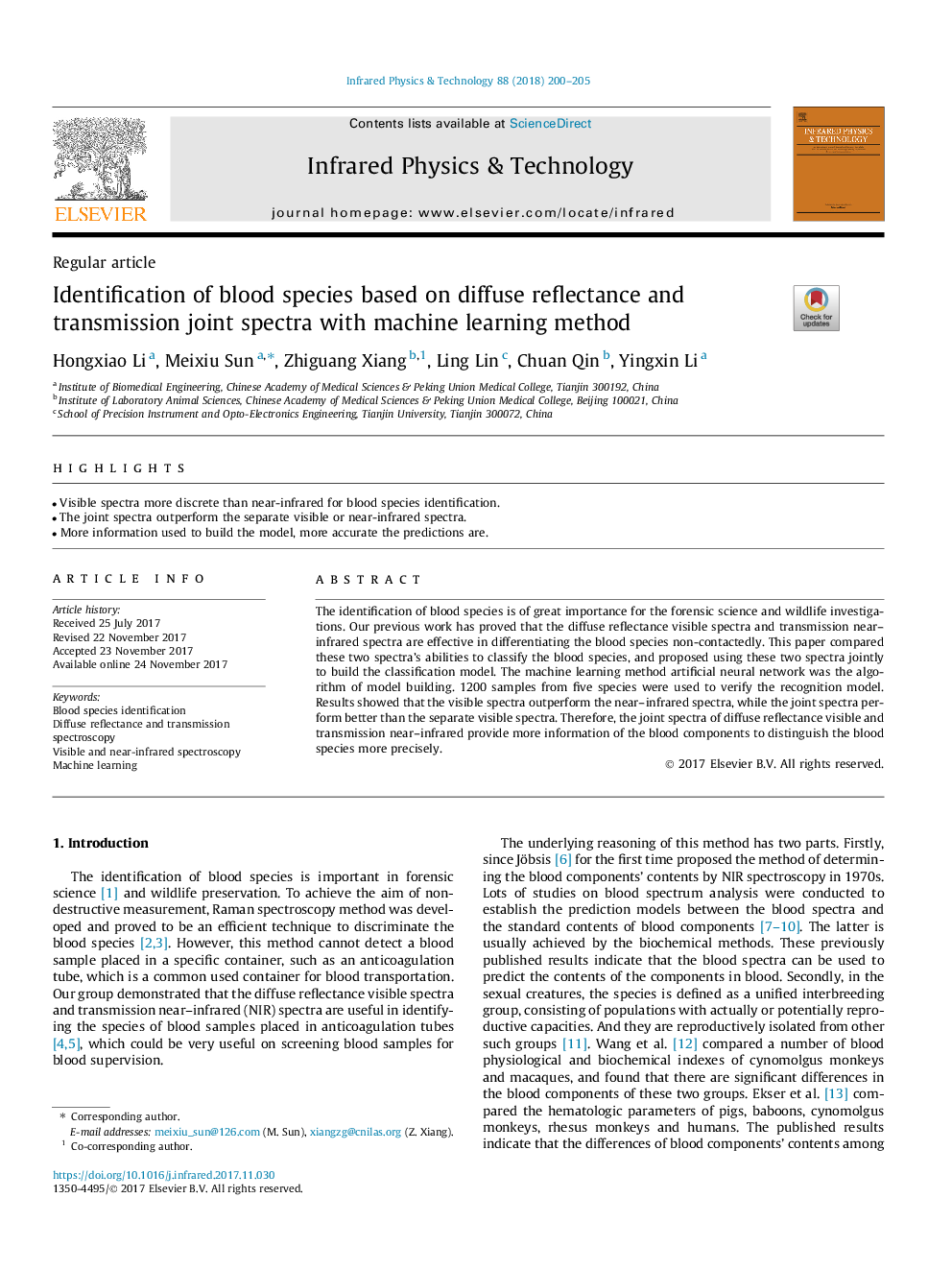| Article ID | Journal | Published Year | Pages | File Type |
|---|---|---|---|---|
| 8146136 | Infrared Physics & Technology | 2018 | 6 Pages |
Abstract
The identification of blood species is of great importance for the forensic science and wildlife investigations. Our previous work has proved that the diffuse reflectance visible spectra and transmission near-infrared spectra are effective in differentiating the blood species non-contactedly. This paper compared these two spectra's abilities to classify the blood species, and proposed using these two spectra jointly to build the classification model. The machine learning method artificial neural network was the algorithm of model building. 1200 samples from five species were used to verify the recognition model. Results showed that the visible spectra outperform the near-infrared spectra, while the joint spectra perform better than the separate visible spectra. Therefore, the joint spectra of diffuse reflectance visible and transmission near-infrared provide more information of the blood components to distinguish the blood species more precisely.
Related Topics
Physical Sciences and Engineering
Physics and Astronomy
Atomic and Molecular Physics, and Optics
Authors
Hongxiao Li, Meixiu Sun, Zhiguang Xiang, Ling Lin, Chuan Qin, Yingxin Li,
